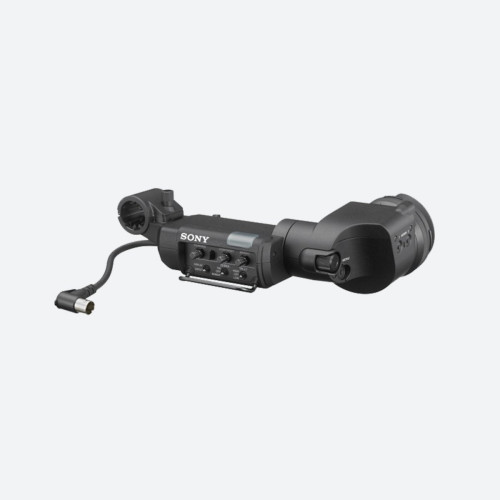Neither a borrower nor a lender be....

Author: Bob Pank#
Published 1st March 2011
Much has been written in the press recently about access to, or more frequently, the absence of funding for small businesses, otherwise known as SMEs (small and medium enterprises). But how do we define a small enterprise and when does a company transition from a small to medium enterprise?
The official definitions are as follows: a small company has a turnover of no more than £6.5 million, a balance sheet total of no more than £3.26 million and 50 employees maximum. A medium-sized company has a turnover of no more than £25.9 million, a balance sheet total of no more than £12.9 million and 250 employees maximum.
Ninety-nine per cent of all UK companies fit into these two categories including the majority of businesses in the broadcast market, excepting broadcast manufacturers and BBC. It is these SMEs that are being cash squeezed by high street banks and which now need real stimulus to develop the green shoots of recovery that have been evident in the last few months.
The good old days
Traditionally, SME business owners would look to arrange finance by running the problem past their local bank manager who would organise borrowing that, with a personal guarantee, would then be lent to the business in the form of an overdraft.
Today’s banking reality
However, in today’s market, the presence of a local bank manager is something of a myth. Finding one with any propensity to lend, without securing the deal on a property, is a pipedream. Why is this? And where are the sources of finance currently being promoted by the government?
The reason that banks will not lend, despite the government pleading that they do so, is that they are completely restricted under new Basle capital adequacy ratios (CAR). OK, so what’s that all about? Put simply, it’s the ratio of a bank’s capital (equity and reserves – its protection against losses) to its risks (such as operational risks and credit risks – its potential losses). A bank’s CAR is equivalent to a term we used to use frequently: leverage. If the bank’s debt is secured, it has to provide less capital equity against a loan than if the debt had not been secured. The end result is that banks will only offer secured loans to a business, or lend solely to larger corporates, who can also be measured by the CAR ratings system, making them much more secure borrowers, this way banks can preserve their adequacy ratios
Other options
Are there any alternatives – and do they offer better deals? The answer is just as complex.
The Enterprise Finance Guarantee scheme (EFG) and Enterprise Capital Funds (ECFs) are the two principal sources of funding for UK SMEs. There are also separate regional initiatives in England, Wales, Scotland and Northern Ireland.
The Enterprise Finance Guarantee (EFG) scheme
EFG (which replaced the Small Firms Loan Guarantee scheme) aims to encourage banks to lend to SMEs. The government guarantees 75 per cent of the loan; the lender covers 25 per cent. Companies with an annual turnover of up to £25m can apply; loans (between £1,000 and £1m) are repayable over 10 years. It can convert overdrafts into loans; raise new overdrafts or extend existing overdrafts; provide new loans or refinance existing loans; and help with cash flow. It is available for firms in the broadcast industry. You apply through your bank.
The catch? Banks tend to want their 25 per cent risk secured by charges to property and/or at least full personal guarantees.
Enterprise Capital Funds (ECF)
ECFs (venture capital funds backed by the government) invest in fast-growing businesses. About £150m of public funds have been invested through the scheme since it was launched in 2006. In December, the government announced that the scheme will be boosted by an additional £200m over the next four financial years.
Business should apply direct to one of the funds: Amadeus Enterprise Fund, Catapult Growth Fund, Dawn ECF, IQ Capital Fund, MMC Ventures ECF, Oxford Technology ECF, Panoramic Growth Equity, Seraphim ECF and the Sustainable Technology Fund.
Is there a catch with this scheme? Of course. First, although it is open to SMEs in most business sectors, hi-tech companies predominate. Secondly, the investment is made in exchange for a stake in the business. Investors prefer fast moving, technology companies; they will always take a shareholding in the business; and they normally expect a place on the board.
Regional development agencies
Several regional initiatives cover Northern Ireland, Wales and Scotland. There are nine regional development agencies (RDAs) in England, established to promote the idea that business is not and should not be solely based in the South East. For the media and broadcast industry RDA’s are being used to encourage media businesses to set up outside the M25. In 2012 these RDAs will transform into Local Enterprise Partnerships.
These agencies give grants for start-up companies and new employers. The most vivid example of how RDAs can make a regional difference is probably the Salford Quays development. Here, private industry, Peel Media, the government (in the form of the BBC and Salford university), television (in the shape of ITV), and others are all trying to create a centre that balances the regional disparity in the UK broadcast industry.
What future?
Despite these sources of finance little will change for SMEs until the government solves the main problem: banks are cash restricted in terms of lending.
Next month I will show you that there are additional ways of raising cash – through the use of your balance sheet – giving hope to struggling SMEs in our sector.
For advice on raising money for your business, or on other management and business issues, do email me on peter.savage@azule.co.uk and/or write to the TV bay editor. To read other articles in this series, visit our website: www.azule.co.uk.



































